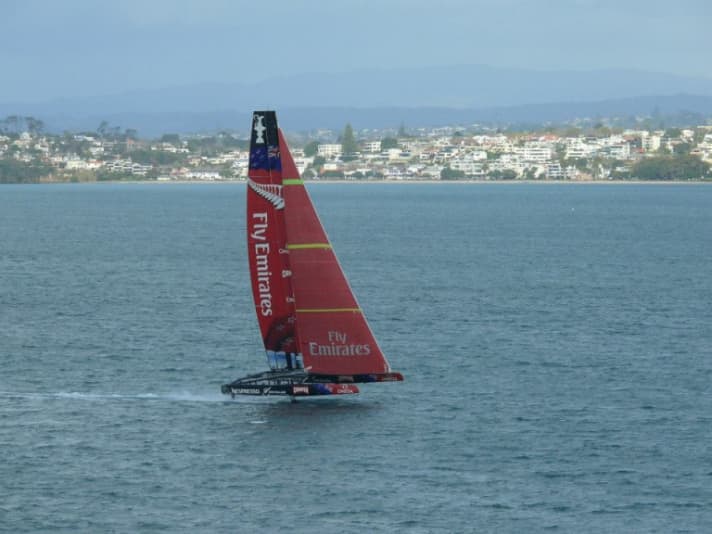





Just three days ago, Team American Magic announced its partnership with bike manufacturer Sram. Yesterday it was seen on the water with pedals for the first time. Ineos Britannia is probably also planning to use cyclists.
This has several advantages. Obviously, the legs can develop more strength than is possible from the arms. This can therefore provide more energy. At least as important, however, is that the athletes can also work with their hands and arms at the same time. This allows the helmsman to concentrate solely on his job and not have to worry about foils or the like.
America's Cup 2017: Cyclist decisive innovation
At the 35th America's Cup in 2017, it was the New Zealanders who surprised and ultimately triumphed with cyclists. Once again, it was the Kiwis who caused a minor sensation. Back in 2013, it was Emirates Team New Zealand that made history with the first foiling catamaran. Today, experts agree that the New Zealanders simply showed their innovation to the public too early and the competition was able to start the technological race to catch up in time. As a result, the American Cup defenders made a spectacular comeback.
2017 was to be different. The New Zealanders remained the only team with cyclists on board and clearly beat the Americans in the final. Installing pedals instead of conventional grinder columns, which allowed the sailors to use their stronger legs to drive the winches and thus trim the sails, was a major factor in the success story. The New Zealanders were able to build up the pressure for the hydraulic systems faster than their opponents and were therefore more independent when making manoeuvring decisions. However, the idea was not entirely new even then. The first experiments with pedals for grinders were carried out in the 1960s. Pelle Petterson's "Sverige" crew trialled them in the America's Cup in 1977 with mixed success.

Ineos Britannia firmly plans for cyclists
At the last Cup, the use of pedals on the monohulls, which were foiling for the first time, was prohibited in the rules. This was probably because seeing cyclists on a flying sailing boat did not make a good impression. As the number of crew has been reduced from twelve to eight for the upcoming America's Cup 2024 in Barcelona, with the same boat size, effective energy generation now plays an even greater role.
In addition to the American team, the British also want to use cyclists. Four out of ten athletes are listed as such on their crew list. However, they are currently still waiting for the delivery of their test boat, a One Design AC40. These were developed by Team New Zealand for all teams and may be modified during the preparations. It therefore remains to be seen when and how Ineos Britannia will deploy its cyclists.
- The creation of the first "flying" multihull at the America's Cup in the video:
